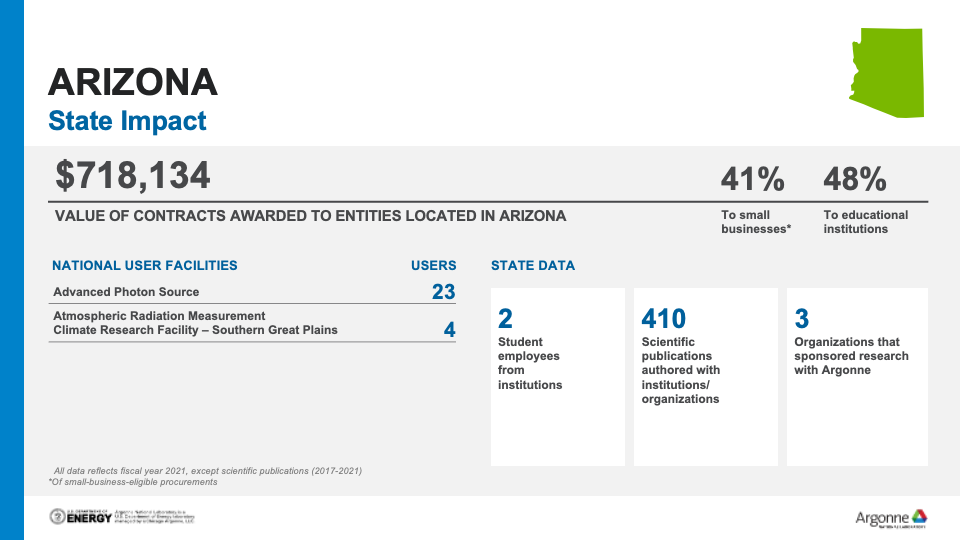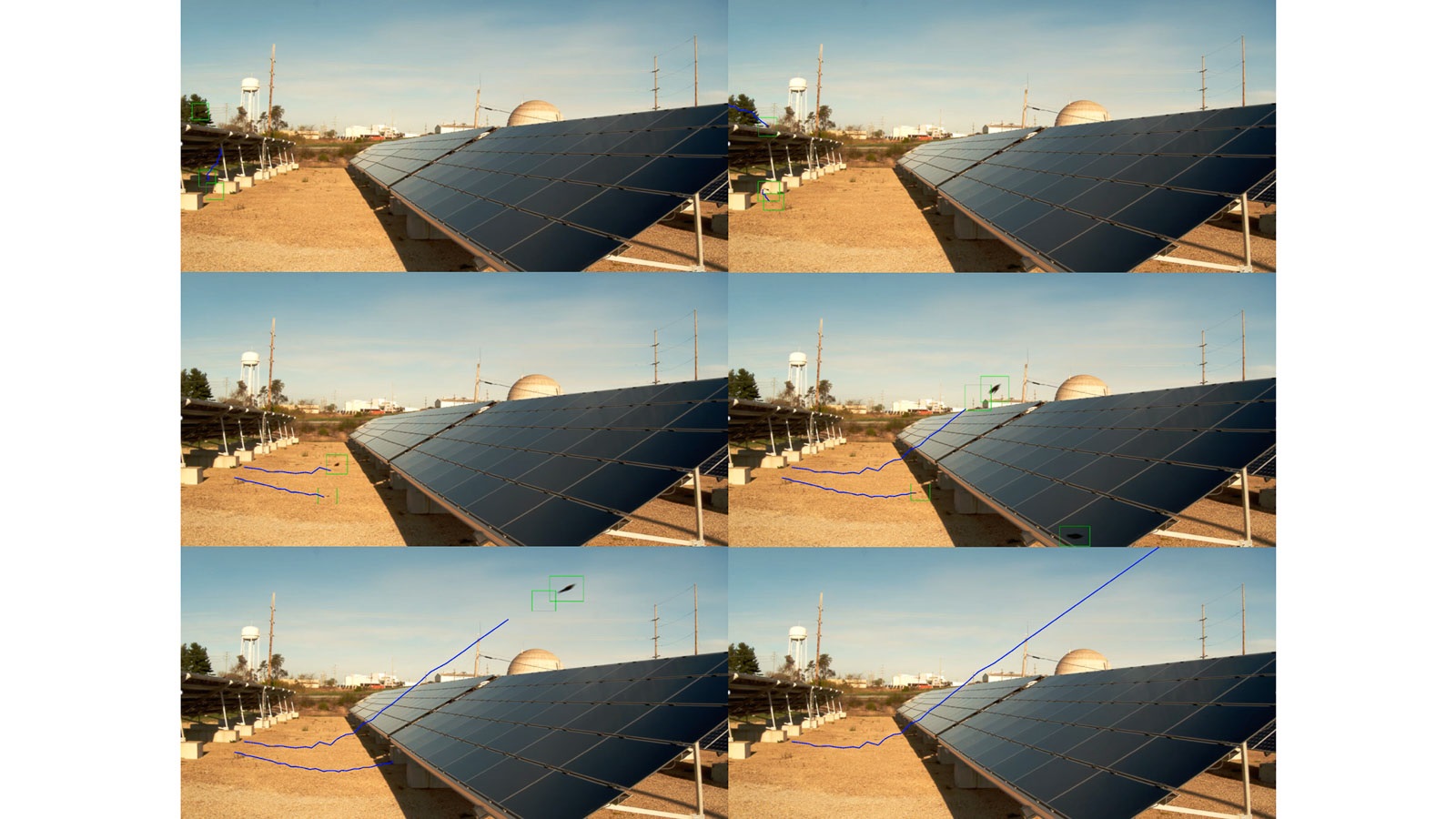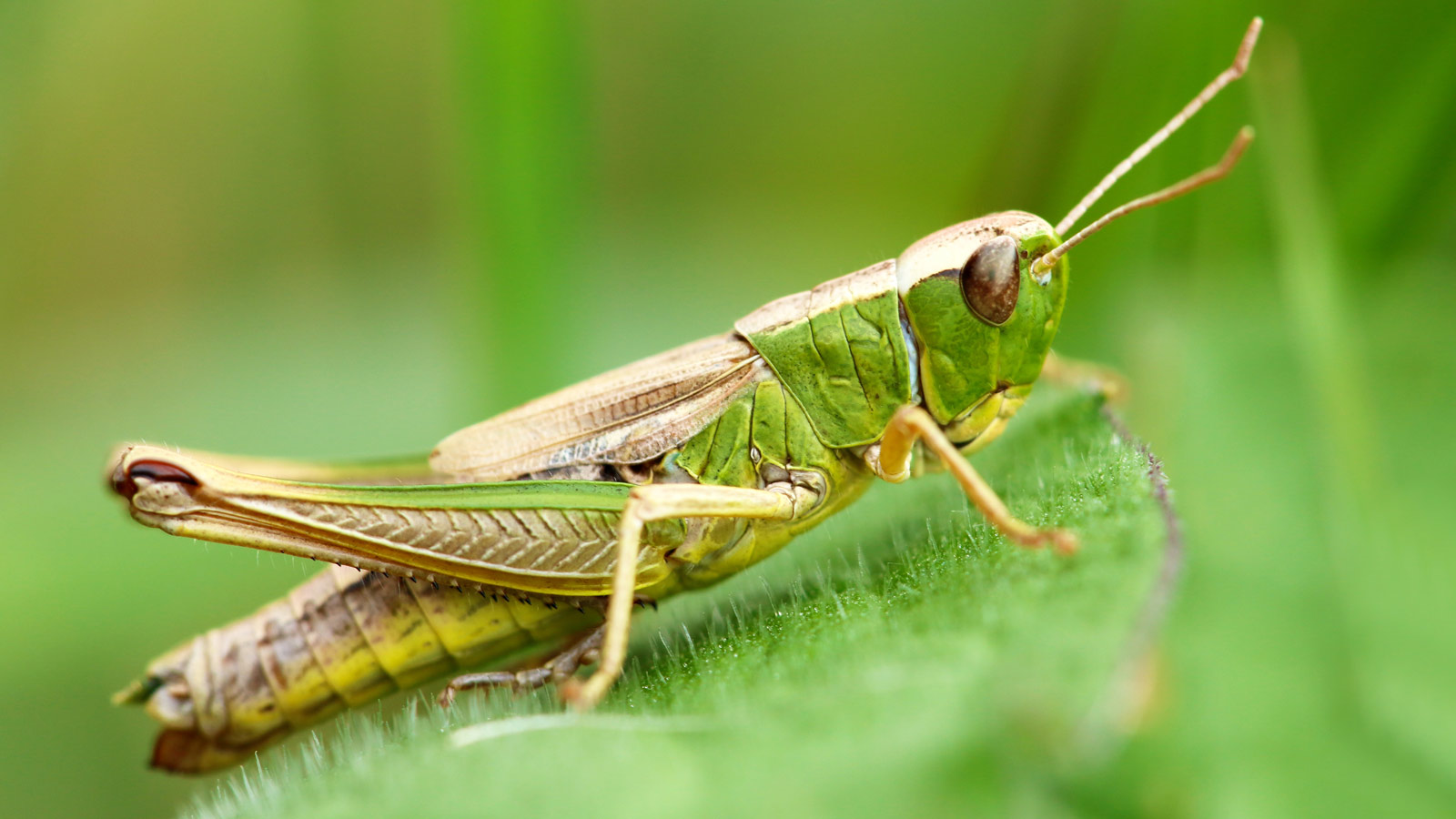Argonne teams with U.S. Department of Defense and Duke Energy to monitor birds around solar facilities
A U.S. Department of Energy (DOE) study estimates that solar energy must increase by 10 times to meet the U.S. decarbonization goal by the start of the next decade. Bird fatalities surrounding solar energy facilities have become a concern, as current monitoring methods do not provide sufficient information.
Researchers in DOE’s Argonne National Laboratory’s Environmental Science division are partnering with Duke Energy and U.S. Department of Defense’s Partners in Flight/Luke Air Force Base (AFB) to develop a much-needed bird monitoring technology to investigate the impacts of solar energy facilities on bird populations. The project is funded by the DOE Solar Energy Technologies Office.
Argonne’s goals are to collect video of bird activities at utility-scale photovoltaic solar energy facilities and test a machine vision technology developed using the video data. Two solar energy facilities in different desert environments — Luke AFB Solar Plant in Maricopa County and Duke Energy’s Bagdad Solar Power in Yavapai County — provide a large volume of bird activity data to develop a robust model.
The scientists are creating a near-real-time AI enabled camera system to understand why bird fatalities occur at solar energy facilities, what attracts birds to solar energy facilities, and to inform operators on how bird populations surrounding the solar energy farms can be protected.
The system’s AI techniques include computer vision supported by machine learning/deep learning (ML/DL) algorithms. It works by monitoring the area with high-definition edge-computing cameras, detecting birds, classifying bird activity in live-stream video, and reporting bird activities to users. When a bird collision is detected, it will notify users shortly after it occurs.
Arizona State, Argonne discovery may change modeling, thinking of how life evolves on exoplanets
Dan Shim, an associate professor at Arizona State, and his team of researchers simulated conditions of planets completely covered in water to learn how life could be supported without land masses. They re-created conditions from those water-filled worlds with the help of the Advanced Photon Source (APS), a DOE Office of Science user facility at the Argonne. The team brought their samples to two APS beamlines: GeoSoilEnviroCARS (GSECARS), operated by The University of Chicago, and High-Pressure Collaborative Access Team (HPCAT) operated by Argonne’s X-ray Science Division.
The researchers’ findings were published in the Proceedings of the National Academy of Sciences and focused on a new transitional phase between silica and water, indicating that the boundary between water and rock on exoplanets is not as solid as it is on Earth. This pivotal discovery could change the way astronomers and astrophysicists model exoplanets and inform the way we think about life evolving on them.
Arizona State, Virginia Tech study shows similar responses to gravity in insects and humans
Researchers from Arizona State University and Virginia Tech collaborated with the DOE’s Argonne National Laboratory for a groundbreaking study showing that gravity shifts blood and air sacs in grasshoppers, who respond with cardiovascular changes similar to those observed in humans. The primary data of X-ray images was collected at Argonne’s Advanced Photon Source.
“While it has long been known that vertebrates rely on compensatory responses to gravity with changing body orientation, this topic has not been previously studied in invertebrates,” the study said in the Proceedings of the National Academy of Sciences. The study’s findings suggest that gravity-driven cardiovascular responses may be ancient and widely shared among animals, opening the door for invertebrates as model systems for investigation of cellular and systemic mechanisms of gravity responses. The researchers believe there will be many follow-ups to this study in insect physiology.



